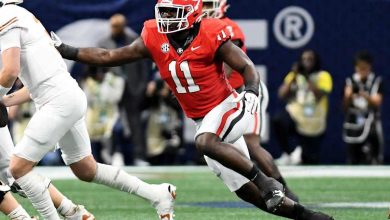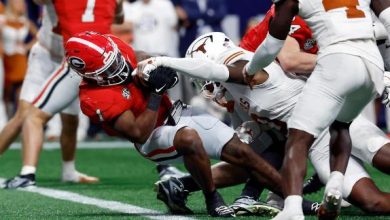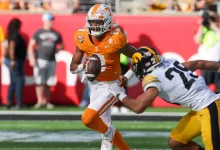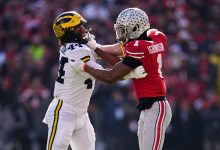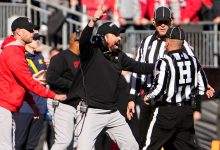Kentucky Head Coach Mark Pope wants teams to advance the ball after timeouts, believing it creates more exciting late-game moments and allows for elite-level shots and decision-making under pressure.
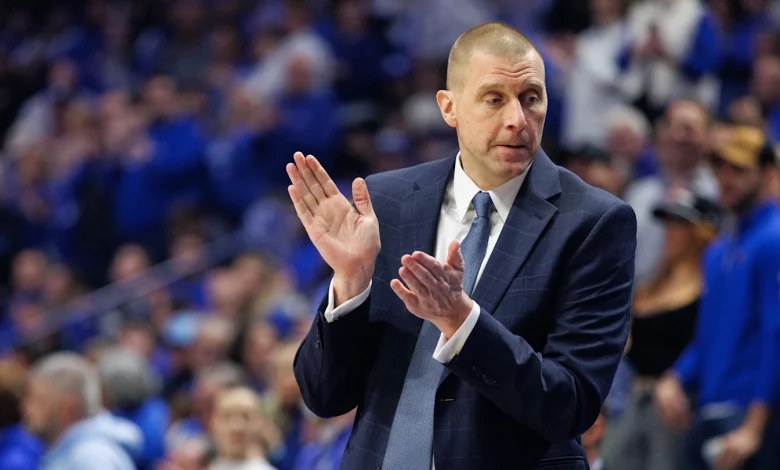
Kentucky basketball is entering a bold new era under the leadership of Head Coach Mark Pope, and it’s not just the roster or playing style that Pope wants to reimagine. One of his most intriguing suggestions doesn’t involve recruiting or practice reps—it’s about a change in the rules that could reshape the end-of-game dynamics in college basketball.
In a recent statement, Pope shared a passionate and detailed vision of how one change could inject late-game situations with a dose of adrenaline, strategy, and drama that fans crave.
“The change that I would really like to make, that I’d be super excited about? I’d like to be able to advance the ball out of timeouts. I know it slows down the game, but it makes the game so much more interesting when, with 2.5 seconds or 1.5 seconds left, if you don’t have to go full-court, but you can advance it. You have a chance to get elite-level shots and decision-making.”
Pope’s words are likely to spark conversation across coaching circles, among fans, and within NCAA rules committees. The proposal he refers to is a rule already used in the NBA and WNBA, but not yet adopted in college hoops. His argument is rooted in enhancing excitement, increasing strategic complexity, and allowing top-level talent to flourish in the game’s most critical moments.
Let’s explore what this change means, why Mark Pope is advocating for it, and how it could reshape college basketball’s biggest moments.
Understanding the Rule: What Does “Advancing the Ball” Mean?
In the NBA and WNBA, when a team calls a timeout in the final two minutes of regulation or overtime, they have the option to inbound the ball from the frontcourt rather than the baseline of the full court. This rule is known as “advancing the ball.”
In practice, it means that a team trailing by a point or two in the dying seconds of a game doesn’t need to sprint the length of the court to get a shot off. Instead, they inbound from the sideline in front of the scorer’s table, giving them immediate access to the offensive half of the court and significantly increasing their chance of getting a quality shot off before the buzzer.
In college basketball, however, the rule does not exist. Teams must inbound from their own baseline after a timeout, regardless of time remaining. As a result, many final-second plays in college games devolve into half-court heaves or rushed three-point attempts.
Pope is advocating for the NCAA to align with the pros on this rule, allowing college teams to maximize late-game possessions and give fans the drama they expect from close contests.
The Case for Change: Why Mark Pope’s Idea Makes Sense
Mark Pope’s rationale is rooted in both strategy and spectacle. Here are several reasons why his proposal has merit:
1. Improved Shot Quality in Final Seconds
One of the biggest criticisms of late-game college basketball is that the final play often results in a rushed, low-percentage shot. When forced to go full-court in just a few seconds, teams struggle to run coherent plays.
Advancing the ball would allow coaches to diagram more sophisticated final plays—think elevator screens, backdoor cuts, or designed looks for star shooters—rather than relying on a desperation heave.
2. Greater Strategic Depth
Coaches like Mark Pope thrive on drawing up late-game scenarios. Allowing a timeout to trigger an advancement adds a new layer of strategy. Does a team call timeout with 4 seconds left to advance the ball and set a play? Or let the game flow?
The possibilities for offensive and defensive tactics are expanded, creating more opportunities for outthinking an opponent—not just outrunning them.
3. More Excitement for Fans
From a fan perspective, few things are more thrilling than a buzzer-beater or a perfectly executed final play. Allowing teams to run plays from midcourt increases the chance of dramatic endings, keeping fans engaged until the last second. It’s a change that could make March Madness even madder.
4. Showcasing Elite Talent
As Pope noted, advancing the ball allows for “elite-level shots and decision-making.” College players with NBA aspirations can benefit by displaying their clutch decision-making in pressure-filled scenarios, helping scouts better assess talent.
Addressing the Counterpoints: Why the NCAA Hasn’t Done This Yet
While Pope’s idea has clear appeal, there are reasons why the NCAA has yet to adopt the rule. Opponents of the change typically cite the following concerns:
1. Game Flow and Timing
Advancing the ball does slow the game slightly, particularly with multiple timeouts in the closing seconds. The NCAA has generally favored a faster pace of play and may resist a rule that risks prolonging the game.
2. Preservation of “College Basketball Identity”
Some purists argue that college basketball’s charm lies in its differences from the NBA. Keeping the full-court challenge in final plays adds a distinct flavor and demands different skills.
3. Coaching Resources and Parity
Critics might say that giving coaches more opportunities to draw up plays disproportionately favors elite programs with deeper staffs and more experienced tacticians—potentially widening the gap between powerhouse programs and mid-majors.
Still, most of these concerns could be addressed through thoughtful implementation. Limiting the advance-the-ball rule to the final minute, or restricting it to one use per game, could maintain game flow while still improving endgame drama.
How This Change Would Affect Kentucky and Other Power Programs
Mark Pope is in a unique position. As the new face of Kentucky basketball—a program with one of the richest traditions in the sport—his voice carries weight. He’s also building a roster filled with elite talent capable of executing complex plays under pressure.
For Kentucky and similar programs:
- Recruiting Advantages: Showing recruits they’ll have chances to shine in clutch moments may attract more talent.
- Endgame Efficiency: With disciplined execution, Pope’s teams could capitalize on these moments more consistently than less prepared opponents.
- Fan Engagement: Big Blue Nation thrives on drama and victories. More compelling finishes mean even higher viewership and ticket interest.
Programs with experienced coaches like Tom Izzo (Michigan State), Scott Drew (Baylor), and Dan Hurley (UConn) could also benefit, as they’re adept at late-game tactics.
Learning from the NBA and WNBA
The NBA and WNBA have used the advance-the-ball rule for years to great effect. Some of the most iconic playoff moments were made possible because teams could run a set play from the frontcourt in the final seconds. Think of Damian Lillard’s walk-off three, Derrick Fisher’s 0.4 shot, or Breanna Stewart’s clutch buckets.
Mark Pope is essentially asking: Why should college basketball deny itself that same level of drama?
The success of the rule at the professional level serves as a strong precedent, showing how it can elevate the entertainment value without undermining the integrity of the game.
What’s Next: Could This Actually Happen?
The NCAA Men’s Basketball Rules Committee meets annually to review potential rule changes. For Pope’s idea to gain traction, it would need support from a critical mass of coaches, athletic directors, and conference administrators.
Pope’s status as Kentucky’s head coach gives him a larger platform to influence this discussion. If other Power Five coaches back the idea, the committee may be compelled to give it serious consideration.
It’s worth noting that the NCAA has shown some flexibility in recent years, experimenting with rules like the shot clock reset, the extended three-point line, and the implementation of the coach’s challenge system. In this context, Pope’s proposal isn’t radical—it’s evolutionary.
Mark Pope’s Vision is Bigger Than One Rule
Mark Pope is already shaping the conversation around college basketball in his first year at Kentucky, and his push to allow teams to advance the ball after timeouts is a clear sign of his innovative mindset. It’s not just about winning games—it’s about enhancing the sport for players, coaches, and fans alike.
By enabling elite-level plays in the closing seconds, this rule change would add layers of strategy, excitement, and opportunity to one of sports’ most dramatic stages. And if it does come to pass, it will be remembered not just as a rule change—but as part of a new era in college basketball, ushered in by a coach unafraid to challenge convention.
Whether the NCAA adopts it remains to be seen. But one thing is certain: Mark Pope has started a conversation that’s worth having—and one that could reshape how college basketball’s biggest moments are written.





